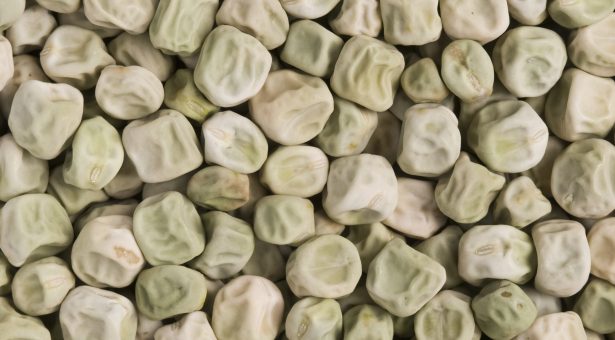Peas with altered “resistant” starch when eaten whole or processed correctly improve glucose homeostasis

Proposed use
Non-oil seed pulses, such as peas, chickpeas, beans, and lentils are a good source of slowly digestible carbohydrate, fibre and vegetable protein. This invention provides an opportunity to identify and develop plant varieties, in particular pea varieties that in combination with correct processing can lower postprandial glucose levels. Processed peas could be used in the following ways:
– Whole or crushed peas for canning, mushy peas, soups, or whole pea snacks.
– Pea flour within breads, bakery, and patisserie products, puffed snacks and crisps.
– Fractionated pea flours, offering a new resistant starch ingredient providing additional value as a second high value fraction within the pea protein extraction process.
This would enable the production of a broad range of healthy products in particular for people with pre-diabetes or type 2 diabetes.
Problem addressed
Elevated postprandial blood glucose is a significant risk factor for type 2 diabetes and associated metabolic diseases globally. The digestibility of carbohydrate-rich foods is a determinant of the postprandial glucose response, and the glycaemic index ranks carbohydrate-rich foods according to their impact on postprandial glucose.
Low-glycaemic index diets have beneficial effects on long-term glycaemic control in type 2 diabetes. In studying how starch structures within a carbohydrate-rich food matrix interact with the gut luminal environment we have discovered a way to help control postprandial glucose.
Technology overview
Pea seeds (Pisum sativum) and pea flour derived from a null mutant in the SBEI (starch branching enzyme I) gene differ primarily in the digestibility properties of the starch accumulated compared to that occurring in wildtype and elite combining pea varieties. Maintenance of both the cell structure and changes in starch morphology associated with the sbeI null mutation are closely related to lower glucose availability in the small intestine, resulting in acutely lower postprandial glucose and promotion of changes in the gut bacterial composition associated with long-term metabolic health improvements.
A combination of pea genetic background and how the peas are processed can be used to produce edible pea material containing starch that is resistant to amylose digestion, “resistant starch”, that when eaten results in lower glycaemic index. Food containing this resistant starch may be of benefit to individuals with pre-diabetes or type 2 diabetes.
This invention provides proprietary methods for:
- Determining whether a pea variety, pea plant, pea seed or pea product is derived from a source carrying the sbeI mutant allele.
- Determining the percentage of resistant starch to non-resistant starch within a food ingredient, food product or non-processed pea.
- Determining whether a processed food composition, food ingredient, or food product retains improved digestion properties of the unprocessed pea.
- Compliance with a granted EFSA health claim (lower glycaemic index) for associated food labelling: https://www.efsa.europa.eu/en/efsajournal/pub/2024
Moreover, this invention covers materials available for license:
- A commercially adapted line containing a validated sbeI null mutant allele, in a yellow or large blue pea background (Pisum sativum), available with sbeI sequence information and genetic markers to enable integration into elite varieties.
Intellectual property information
Published patent: International Publication Number WO2022053494A1, title “Foodstuffs having improved digestion properties”.
Link to published paper(s)
Petropoulou et al. 2020. A natural mutation in Pisum sativum L. (pea) alters starch assembly and improves glucose homeostasis in humans. Nature Food 1: 693-704. https://doi.org/10.1038/s43016-020-00159-8
Inventor information
Prof Gary Frost – Head of the Imperial Nutrition and Food Network at Imperial College London with expertise on the metabolic effect of diet/food structure and human health and disease.
Dr Katerina Petropoulou – Member of Prof Frost’s lab at Imperial College London with expertise in in human nutritional research and clinical studies.
Prof Claire Domoney – Group leader at the John Innes Centre with expertise in pea genetics.
Ms Tracey Rayner – Member of Prof Domoney’s lab at the John Innes Centre, who generated commercially adapted introgression lines containing validated sbeI mutant alleles.
Prof Pete Wilde – Group leader at the Quadram Institute with expertise in food structure breakdown during food processing and digestion.
Dr Cathrina Edwards – Research leader at the Quadram Institute focused on understanding how the structure of plant-based foods is broken down during digestive transit to release nutrients.
